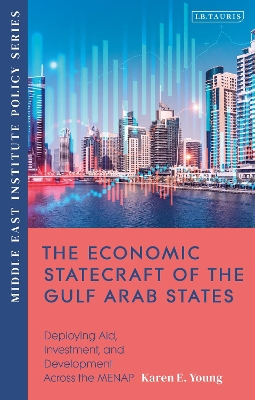Middle East Institute Policy
1 total work
For much of the post-World War II era, the U.S believed that its model of investment and development represented the only means of building aspirational democratic capitalism, and was therefore unfettered by serious competition. That is no longer true. This book examines how the Gulf Arab states are emblematic of the new model of state-led growth and a South-South trend that challenges existing institutions and practices of development finance, as well as global capital markets.
The book analyses the GCC states’ capital flows in comparison with investment and aid from the United States, Europe and China. Karen Young reveals that the Gulf Arab states – especially Saudi Arabia, the United Arab Emirates and Qatar - are the new ‘master developers’, creating sources of development finance through loans or foreign direct investments. Through this type of ‘debt trap diplomacy’ - and following the development model of China - the Gulf states are expanding their sphere of influence reaching north to Jordan and Egypt, south to Yemen, and southwest to the vital trade corridor around the Arabian Sea toward the Horn of Africa and the Red Sea.
The data demonstrates how private capital flows from the United States, United Kingdom, and European Union compete against flows of capital from state capitalism sources such as China and the Gulf, and Young makes subsequent policy recommendations: first she suggests how the U.S and democratic capitalist institutions can engage competitively through private financial institutions to both provide models of development finance and to advocate for liberal economic ideas; and second she explains how recipient states of Gulf aid and investment might better mobilize the opportunity to design their own growth agendas.
The book analyses the GCC states’ capital flows in comparison with investment and aid from the United States, Europe and China. Karen Young reveals that the Gulf Arab states – especially Saudi Arabia, the United Arab Emirates and Qatar - are the new ‘master developers’, creating sources of development finance through loans or foreign direct investments. Through this type of ‘debt trap diplomacy’ - and following the development model of China - the Gulf states are expanding their sphere of influence reaching north to Jordan and Egypt, south to Yemen, and southwest to the vital trade corridor around the Arabian Sea toward the Horn of Africa and the Red Sea.
The data demonstrates how private capital flows from the United States, United Kingdom, and European Union compete against flows of capital from state capitalism sources such as China and the Gulf, and Young makes subsequent policy recommendations: first she suggests how the U.S and democratic capitalist institutions can engage competitively through private financial institutions to both provide models of development finance and to advocate for liberal economic ideas; and second she explains how recipient states of Gulf aid and investment might better mobilize the opportunity to design their own growth agendas.
